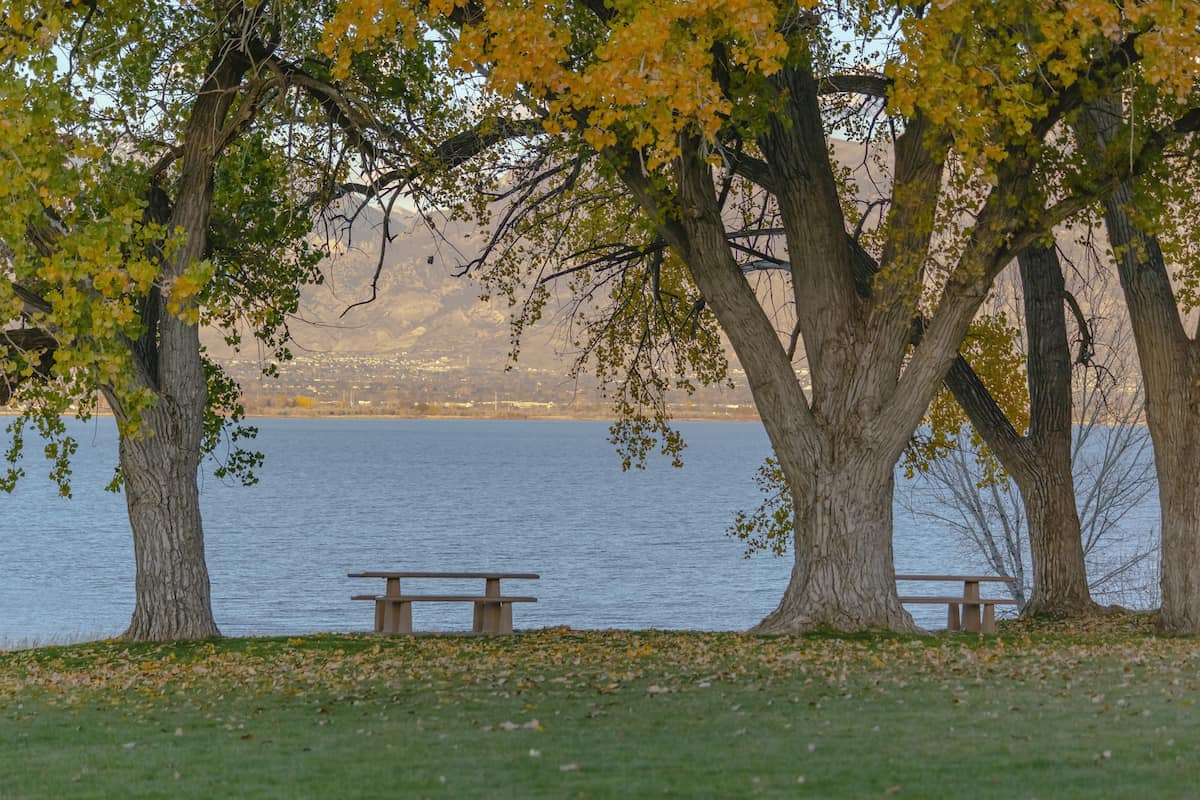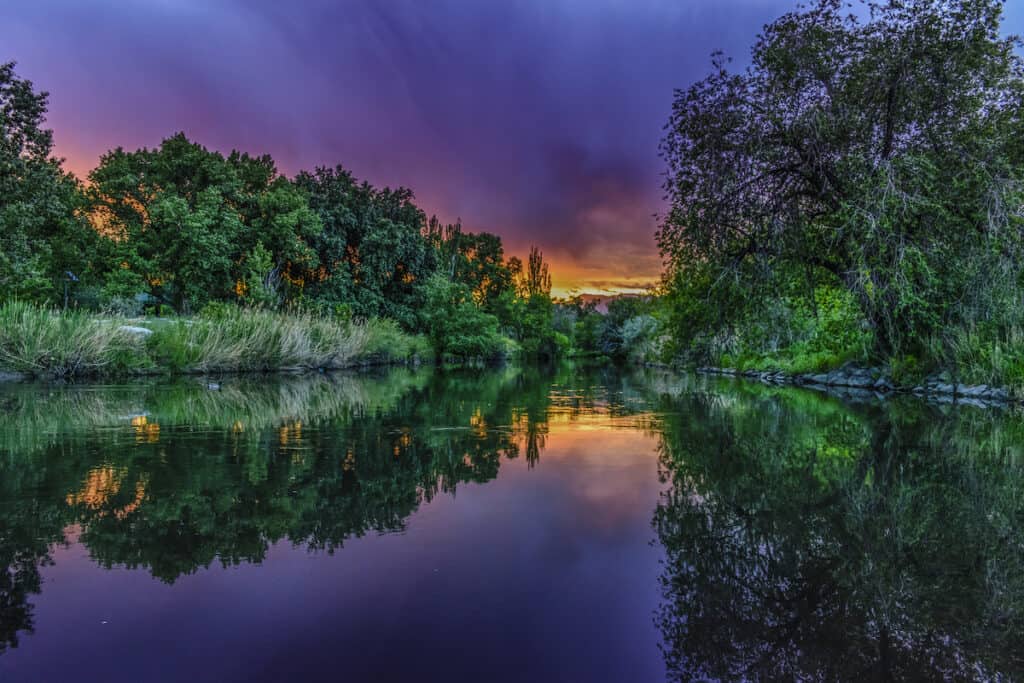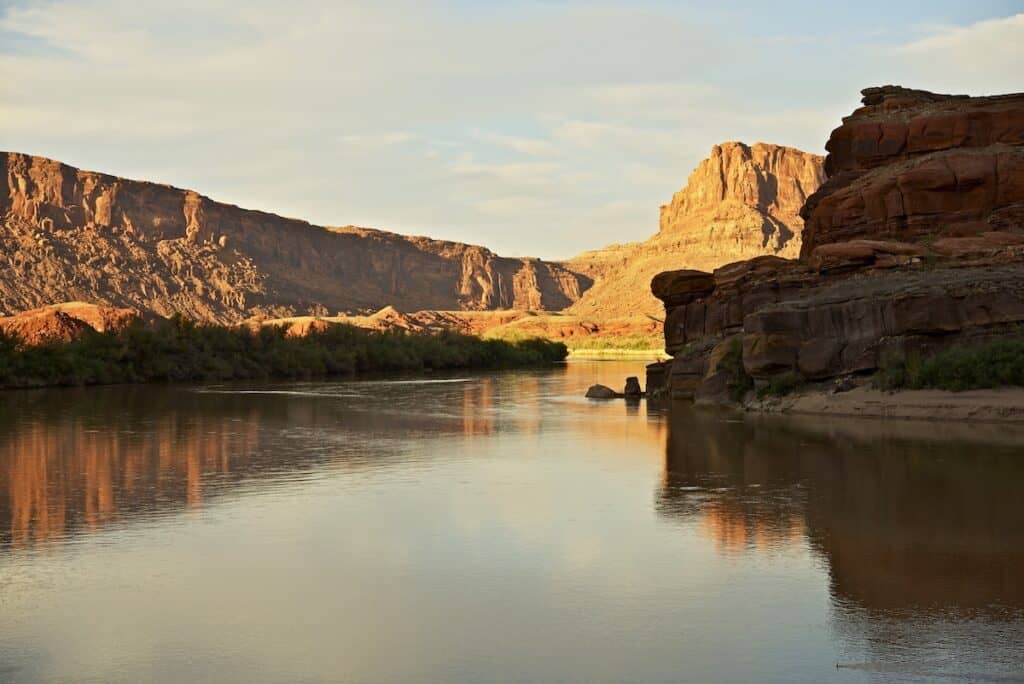Catfish are abundant in several lakes and rivers across Utah. While not as popular as trout or salmon fishing, channel catfishing is a great way to test out your rod’s backbone.
To be honest, reeling in a whiskery, wide-mouthed channel cat covered in slime and just a little bit of the greasy mud from the bottom of the lake isn’t the image most people have when they think about fishing in Utah.
If you’ve been avoiding going after these feisty kitties because of this, it’s time to get over their looks and go for it.
Hooking a 15-pound cat on 10-pound braid and feeling the fish shake its head as it battles you with those huge shoulders is an experience every angler should have.
Utah has plenty of opportunities to have that experience.
Not only that, but catfish are one of the favorite fish in America when it comes to putting great eats on the table.
There are bullheads in several waters around Utah, so if you want to target those, toss a worm in and then rethink your priorities.
Just kidding. There are some great bullhead waters here as well, but we’ll focus on channel catfish, which are far more prized.
Gear and Tactics
Catfish like stinky, smelly baits. In fact, the stinkier, the better. Chicken livers, stink baits, shrimp, worms and cut baits including mackerel from the store or fish you catch locally are all great options. Adding scents can work well, especially with less odiferous baits.
Since channel cats can get over 20 pounds and have been known to put up a fight, you’ll need a medium/heavy rod with line to match. Generally, 15-pound braid or 20-pound mono should do the trick.
A lighter line can be used, but it’s riskier and you’ll need to play the fish longer and tire it out.
Use circle hooks for mackerel, shrimp, and worms. Tie the hook with an easy snell knot or a Palomar for the strongest hold.
Treble hooks work for stink baits and chicken livers. Be careful with treble hooks. Fish are likely to swallow baits, and trebles aren’t easy to remove.
More Catfish Fishing Tips
Read our full article on the best catfish fishing baits, rigs and tactics.
Best Catfish Lakes in Utah
Utah has several great places to target channel catfish.
Utah Lake holds the state record at over 32 pounds, and the current catch and release record of 36 inches was caught at Cutler Reservoir.
There are certainly bigger fish out there.
Utah Lake
Leading the pack is Utah Lake. It’s teeming with catfish.
There are all sorts of fish in the lake, so you’re apt to catch a white bass or carp while targeting the cats, but that’s a good thing.
Channel cats in Utah Lake love carp meat almost as much as white bass meat. Cut up a white bass, and you’re in for fun.
Evenings and mornings are great in the spring through mid-summer. Utah lake is very shallow and gets warm, so the kitties take naps during the afternoon. Overnight success is usually high.
The best areas for cats are Lincoln Beach, Linden Boat Harbor, the Knolls area, and the Pump House.
In addition to the usual still-fishing techniques, you also can head out in a boat early and troll your bait around along the bottom at .8 to 1.0 mph, and you should catch catfish in the 24- to 28-inch range between Lincoln and The Knolls.
There are some giants in that area waiting for dinner. In fact, Utah Lake holds the state record of over 32 pounds.
The lake is also a hotbed for bullheads. You’ll likely catch several in your pursuit of channel cats.
Bullheads aren’t big, but they can put up a pretty fun fight when all’s said and done. If you want to target them, rig a nightcrawler with a few feet of leader to a snap swivel. Add a 1/4-ounce egg sinker above the swivel, and you’re all set.
Utah Lake is one of Utah’s best all-around warm water fisheries, especially if you don’t want to make the long trip to Lake Powell. Among its top options are likely the best white bass fishing in the state.
Willard Bay
Willard Bay has a good number of channel cats.
Located an hour north of Salt Lake City, this freshwater reservoir diked off from the Great Salt Lake has great catfishing, along with walleye, wipers and smallmouth bass. There are yellow perch that school up in the fall.
The catfish are always hungry and will eagerly chase down your stink baits.
Try suspending your baits just off the bottom with a Santee rig. Catfish typically feed on the bottom but will cruise a foot or so above it, searching for a meal. The Santee rig puts the bait right in their face.
The cats at Willard Bay are often between 22 and 26 inches, though bigger fish have been caught. The standard baits work great, and the bite stays solid throughout the summer.
Lake Powell
Lake Powell has plenty of catfish to go around.
When fishing Powell, catfish are often overlooked for more glamorous fish like stripers and largemouth bass. If you’re on a trip to Powell, a fresh catfish makes a delicious dinner.
Cats over 20 pounds have been caught in Powell, though most are in the smaller 3- to 5-pound range, and they are excellent for eating.
Target channel catfish anywhere there’s a sloping, sandy bank, or in a cove. The upper lake is a good area near the San Juan confluence. It also holds a lot of bullheads, if that’s your thing.
Catfish are the easiest gamefish to catch at Powell, as they get the least pressure of the big four. If you’re out on a houseboat for a few days, try hooking some leftovers to your hook and drop it over the edge. You’d be surprised what they’ll bite on.
Crappie and bluegill also are very common at Powell, and pieces of panfish left after filleting can be like money in the bank for big catfish.
Cutler Reservoir
Cutler is just north of Logan and has a good population of catfish to chase. The lake isn’t as warm as most catfish waters in Utah, which should indicate smaller fish, but it holds the catch and release record.
The cats are active and will chase down almost any stink bait. Toss a nightcrawler, shrimp, or chicken liver and float it just off the bottom with a Santee rig. Try about 6 inches up, and you should find them.
The lake is primarily a shallow marsh, so you’ll want to bring a shallow hull boat or kayak for the best access. Deeper holes are around. You just need to find them.
Largemouth bass, walleye, black crappie, bluegill and bullheads are also tucked away and can be fun to target.
Flaming Gorge
The Gorge has a solid number of catfish. They aren’t the main attraction at the lake, which draws anglers from across the country for its famed trophy trout and kokanee fishing, so they see very little pressure.
Target them in the bays and coves throughout the reservoir. Be sure to pick up a Utah/Wyoming fishing stamp. Several spots for cats are on the Wyoming side of the lake.
Night fishing is best, and with the type of bait used, it’s possible to catch a burbot or two. Remember to keep those. Check the current regulations. Burbot were illegally introduced to Flaming Gorge and have been thriving. (They are ugly but delicious.)
The late spring and summer are the best times to try for cats on the Utah side, though trout may strip your bait. Lakers are known to eat the stink bait and leave you with a bare hook.
Best Catfish Rivers in Utah
Some of the best fishing for catfish in the state can be found in rivers. The Bear River, Jordan River, Lower Green and the Colorado River are all worth exploring.
Bear River
The Bear River below Brigham City has excellent fishing. It meanders its way through farmland and empties into Willard Bay. Throughout this section, you can catch channel cats over 30 inches.
Target river bends and fish the deeper sections of the channel.
Chicken liver is the go-to bait, though cut bait works well, as do nightcrawlers. If you catch a carp, cut that up for some perfect catfish snacks.
The area just north of the bird refuge is prime catfish habitat. Be aware that during the best fishing times in the evening and at night, mosquitos the size of small Volkswagens WILL pack your children away, so bring all the bug repellent.
The best technique is to bait up, cast out with a heavy slip weight, and sit back by a fire to keep the mosquitoes at bay. You’ll catch plenty of big cats with the possibility of bringing one in over 20 pounds.
Jordan River
The Jordan has catfish throughout its length. Many anglers turn their noses up at fishing this water because, in the past, it was poorly managed and full of trash.
Luckily the river has been cleaned up, and the county has done a great job turning it into a safe, clean fishing destination. It’s full of catfish, bass, carp, white bass, the occasional trout, and far less trash than in the past.
Fish the slower sections using nightcrawlers or natural baits like chicken livers or mackerel.
A 3/16 or 1/4-ounce slip weight above a snap swivel with 2 feet of leader will work. Let the bait sit, and you’ll be on them in no time.
The cats in the Jordan range from tiny to decent. There are occasional stories of giants being caught, though a 28-inch fish would be considered a trophy for the river.
Lower Green River
Near the city of Green River and down to the confluence with the Colorado River is prime catfish territory. The cats can get up into the 15 pound range, with some heading north of there.
This is not the section of the Green River that’s one of the most famous trout streams in the U.S. That’s farther upriver.
The lower Green doesn’t have many access points, so if you’re planning a fishing trip from a raft, plan ahead for an overnighter.
If you put in at the Green River State Park, there’s an exit point about 20 miles downstream. From there, it’s another 40 miles till the next exit.
If overnighting, check your tent for creepy crawlies before getting into bed. Identical in the morning, check your boots for scorpions.
The catfish are everywhere in the lower section. Wherever smooth, slow-moving water is, there are catfish. People have complained of landing on cats while jumping into the river.
Use anything stinky to get their attention. The water is full of sediment throughout this section, so you’re attracting by scent only.
Chicken livers, anchovies, mackerel and shrimp should do the trick. Be sure to thread the hook through the bait multiple times to ensure the cats can’t strip it off easily.
Colorado River
Once the Colorado River crosses into Utah near Grand Junction, it’s game on. Catfish are everywhere, and catching fish over 10 pounds is common.
There are multiple access points throughout the river system, though once it enters Canyonlands National Park and ultimately ends up in Lake Powell, shore access is difficult.
Chicken livers, shrimp, anchovies, grasshoppers, crawfish, worms, and stink bait work great along this section of the river. Target slower moving water and any coves and pools you come across.
Sandy sections are ideal catfish habitat in the Colorado, and there are plenty of those to go around. Near Moab, you can access several spots using pullouts on the road.
Use a medium/heavy or heavy rod and 20-pound test. You might hook a monster that will break off anything lighter. There are northern pike in the river as well, so they might slice your line with their teeth.
Be aware of the heat and watch out for rattlesnakes. During the heat of the day, they like to hide in the shade of the canyon walls under bushes that we like to set our chairs up next to. Double-check your surroundings.
Honorable Mentions
Sevier River
The Sevier has a decent number of catfish and is worth the trip if you’re in the area.
Located near Delta, this river can have fast action for smallmouth bass and decent catch rates for channel cats. Spend some time testing it out next time you’re near Delta.
Community Ponds
The community fishing ponds across the state are regularly stocked with channel catfish. These fish will eagerly take a worm or stink bait. If you only have an hour to fish, head to the closest community pond and make the most of your time.
If you would like to pinpoint the many ponds regularly stocked with channel catfish, check out DWR’s fish stocking page. It might help to click on “species” and then scroll down to channel catfish.
It’s also useful to check the archives for the previous full year, as most catfish plantings take place from late spring to early fall.
Some lakes are stocked with keepers or bigger fish, while others are stocked with young catfish that will take a year or two to reach catchable sizes.



